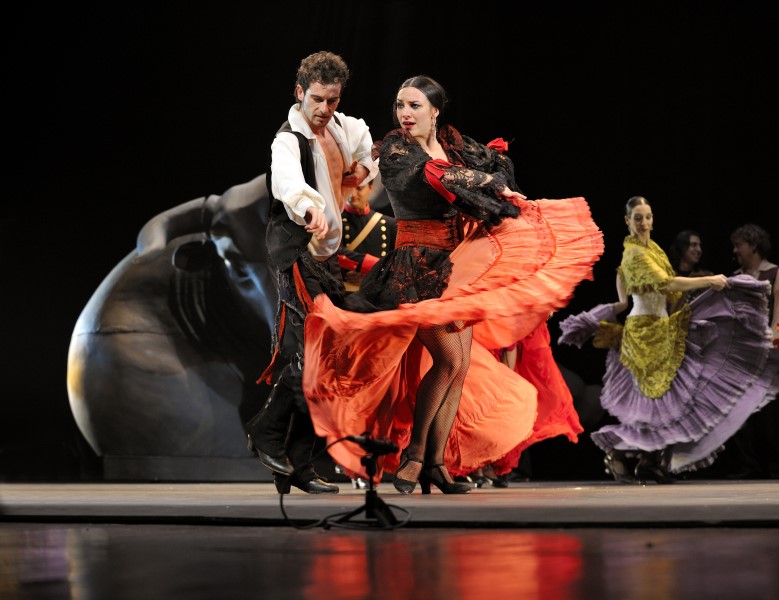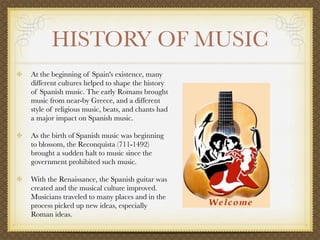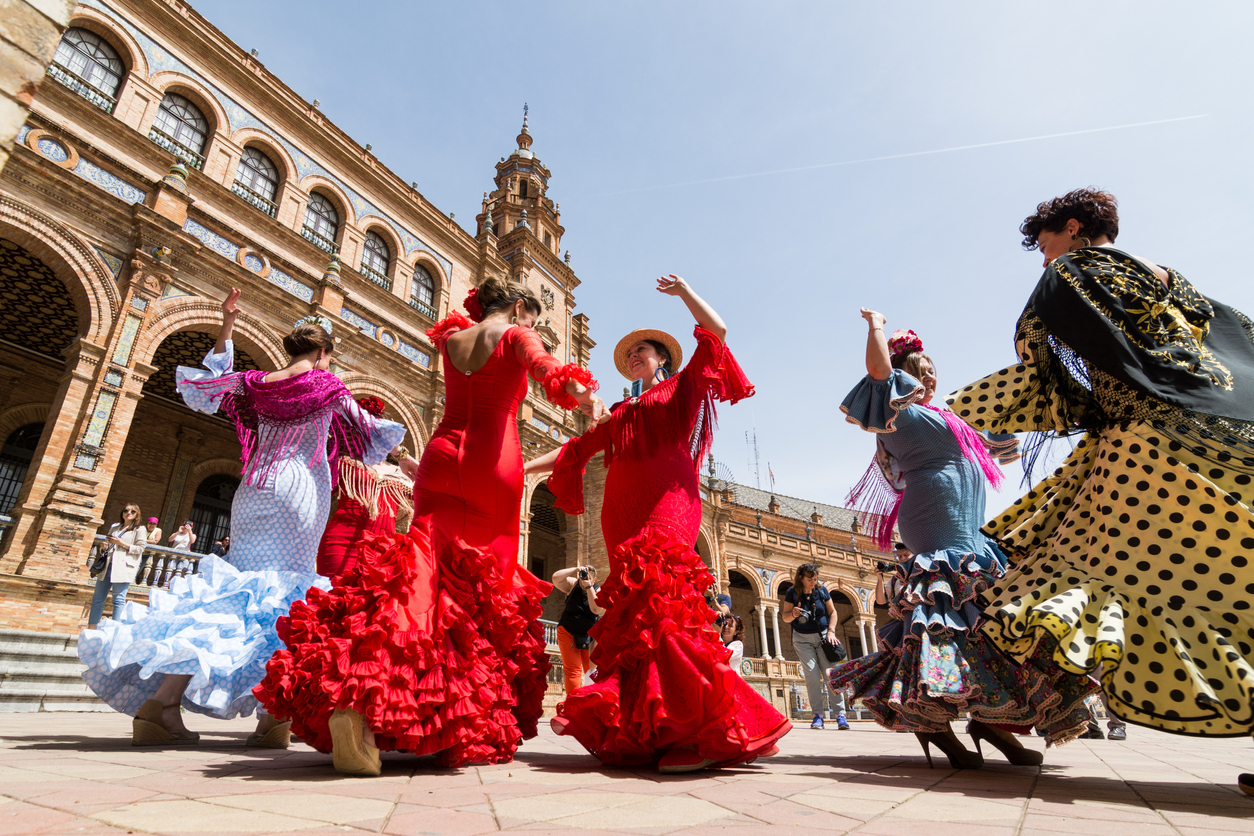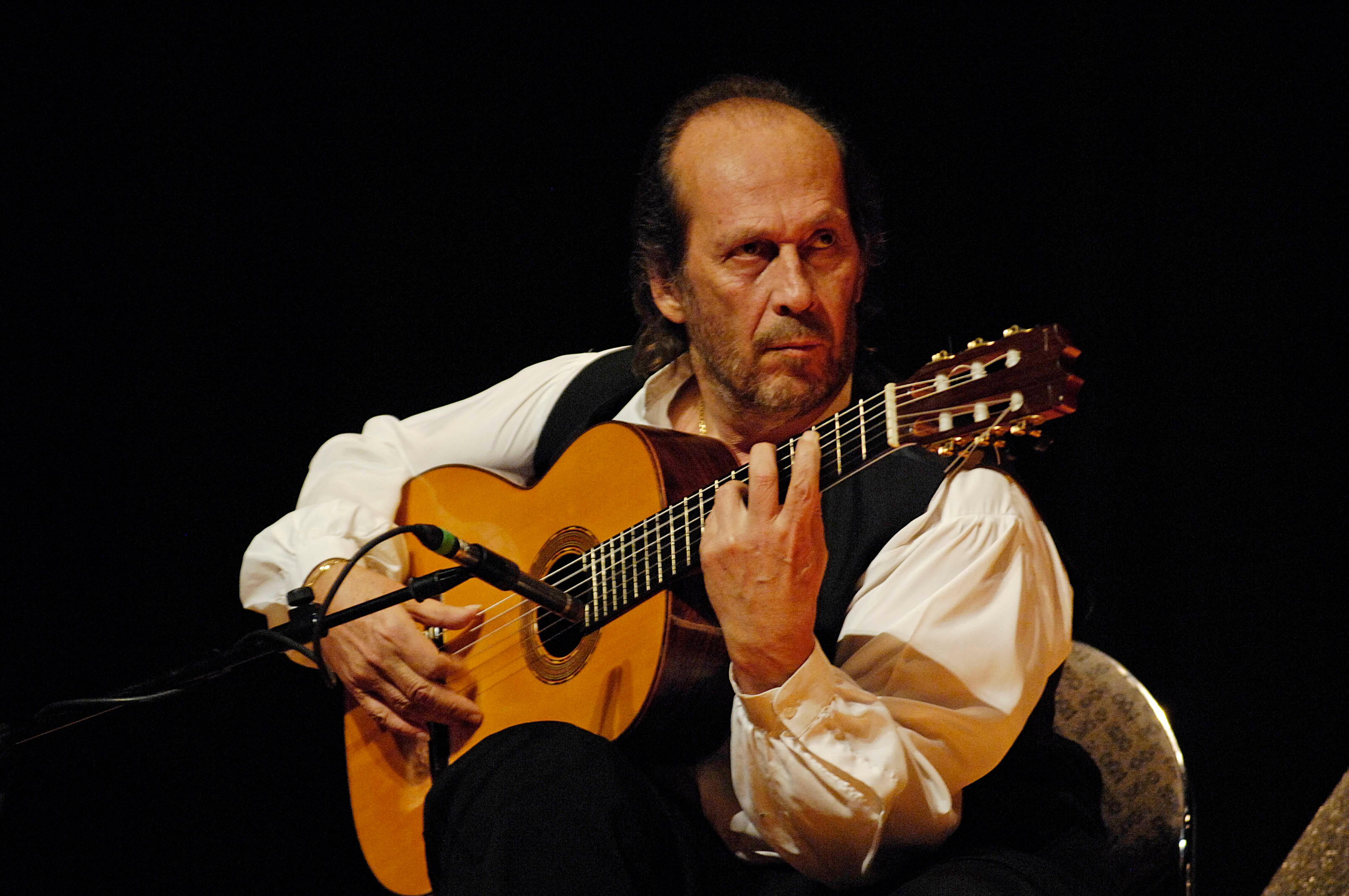Spanish music culture is a rich and diverse tapestry of sounds, rhythms, and traditions that have evolved over the centuries. From the ancient melodies of the Iberian Peninsula to the modern-day sounds of reggaeton and pop, Spanish music has played a central role in the cultural identity of the country and its people.
One of the most well-known and influential genres of Spanish music is flamenco. Originating in the southern region of Andalusia, flamenco is a style of music and dance that combines elements of Arabic, Gypsy, and Sephardic Jewish traditions. Flamenco is characterized by its fast and intricate guitar playing, passionate singing, and powerful dance moves. It is an integral part of Spanish culture and is often associated with the country's Romani (Gypsy) community.
Another popular genre of Spanish music is salsa, which originated in the Caribbean and was brought to the mainland by immigrants from Cuba and Puerto Rico. Salsa is a fusion of Afro-Caribbean rhythms and melodies, combined with elements of jazz and Latin American music. It is characterized by its fast tempo and lively, energetic rhythms, and is often accompanied by elaborate and flashy dance routines.
Spain is also home to a number of folk music traditions, many of which are specific to particular regions or communities. For example, the Basque Country has its own unique style of music known as "Basque folk," which incorporates elements of traditional instruments and melodies from the region. Other popular folk music styles in Spain include Catalan folk, Galician folk, and Castilian folk.
In recent years, Spain has also produced a number of successful pop and rock bands, such as Mecano, Héroes del Silencio, and Jarabe de Palo. These groups have achieved international success and have helped to introduce Spanish music to a wider audience.
Overall, Spanish music culture is a vibrant and diverse mix of sounds and traditions that reflects the country's rich history and cultural diversity. From the passionate flamenco rhythms of Andalusia to the energetic salsa beats of the Caribbean, Spanish music continues to captivate and inspire listeners around the world.
Spanish Music History

There are very different styles for everyone to enjoy. Music in Spain has a long and diverse history with its influences stemming from various cultural streams, the strongest coming from centuries of uninterrupted Roman rule, which left an enduring imprint upon the culture of music in Spain. Spanish people from all around the country meet up in Seville for this event and relish such genres as flamenco. Bass guitar, piano, bongo and conga drums, maracas, and a guiro are all combined to form this beautiful style. Spanish music, with its energetic rhythms and sexy sounds, has forced us to move! The Spanish songs that people listen to at the moment are mostly either filled with latin rhythms, or inspired by English popular music. Jota Jota is more of traditional Spanish music whose origins lie in Aragon.
Spanish Music Genres

Hispanic culture is one of the largest national, ethnic groups living in America. In the 1960s and 1970s, pop groups such as Brincos, Duo Dinamico, Los Pekiniques, Sirex and soloist such as Nino Bravo, Joan Manuel Serrat came up with refined and renewed rhythms and lyrics. Jazz and classical music are very popular, with open-air concerts common in public spaces in the spring and summer evening sunshine. Again, Spain caters to all tastes and truly has something for everyone. Famous Spanish Musicians and Stars Spain has many famous stars recognisable world-wide. Retrieved 24 December 2013. The doctor has told him to wear a black bonnet.
Spanish Music, Culture, and Society

They will learn the technique of playing the castanet and work on playing along with the recording. Get your paper price 124 experts online The dance for Sevillanas is normally an old common people dance. You may know him from his hit, " Despacito". Americans are only white, with blonde hair and blue eyes. Musical styles such as flamenco, polka, Instruments such as guitar, bandoneon, The rhythmic pattern of tango is not what we call permanent. During the first eras of Spain's existence, meshing cultures inadvertently impacted each other on every level- and without a doubt contributed significantly to the history of Spanish music.
Traditional Spanish Music and Dance

Many people go to Midnight Mass, where they sing Christmas carols, or villancicos. It varies considerably from region to region, ranging from uniquely slow in Castille y Leon to a more energetic in Leon. Spanish speakers enjoy their homegrown tunes, and here we have got you a list of the top 10 most popular Spanish music genres. The lyrics, melodies, and rhythms of music are written and composed by each artist, as well as their Latino roots. Flamenco was once played solely by the poor. The piano plays an important role in several Latin American genres, whereas the guitar plays an important role in Spanish traditional music.







